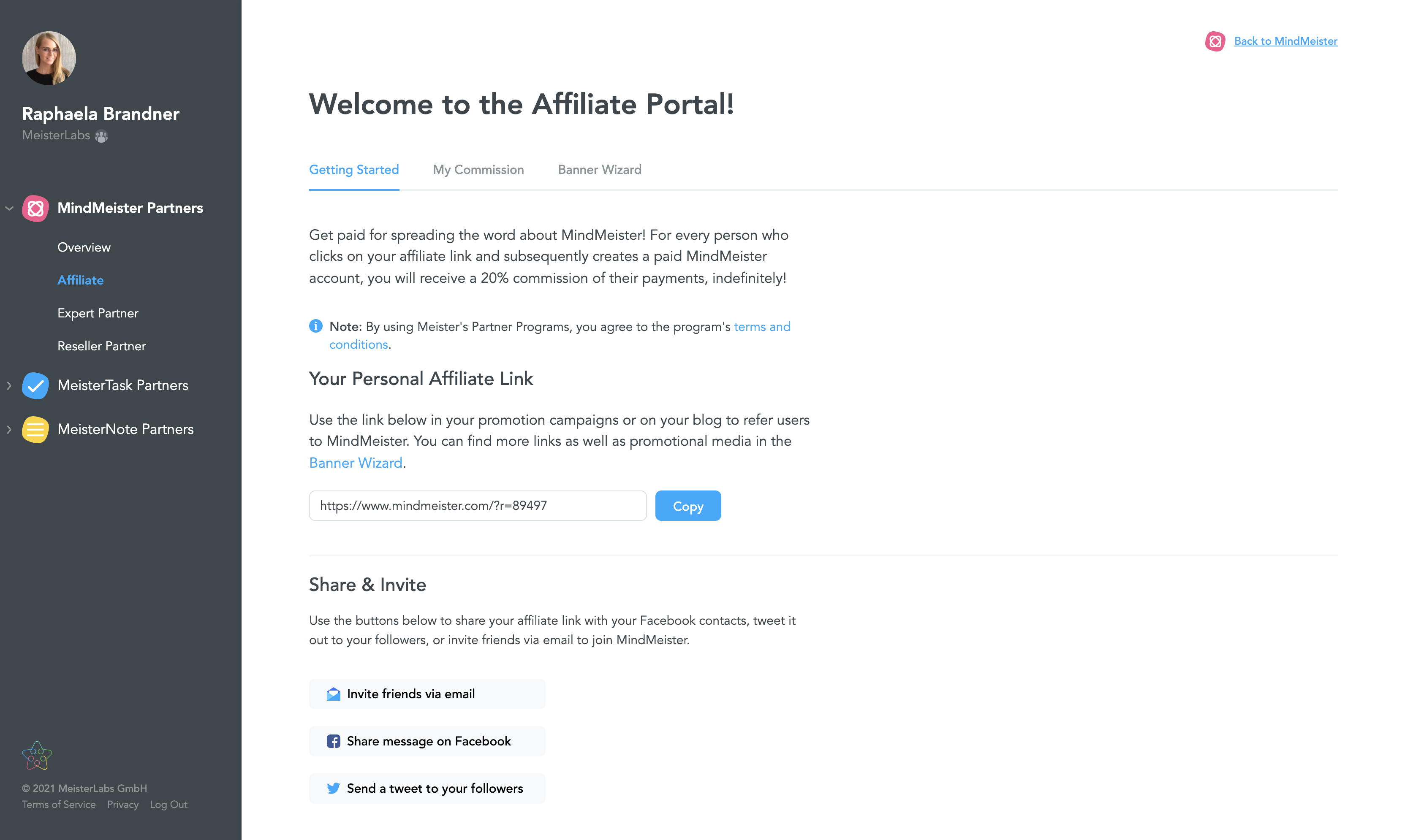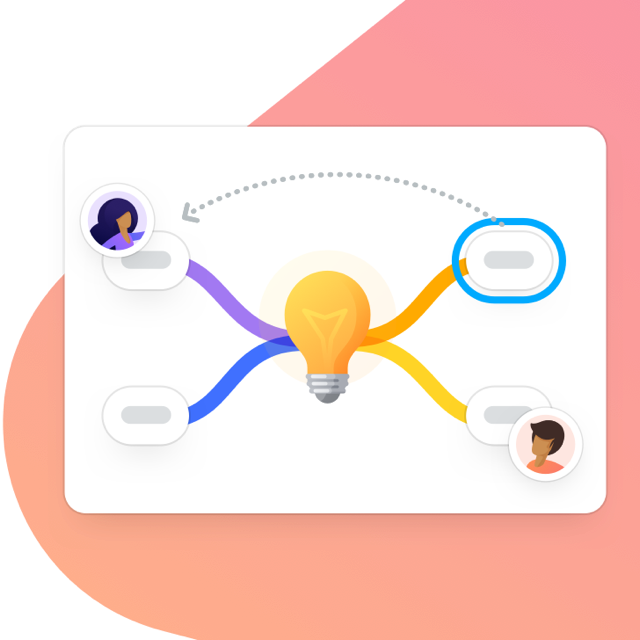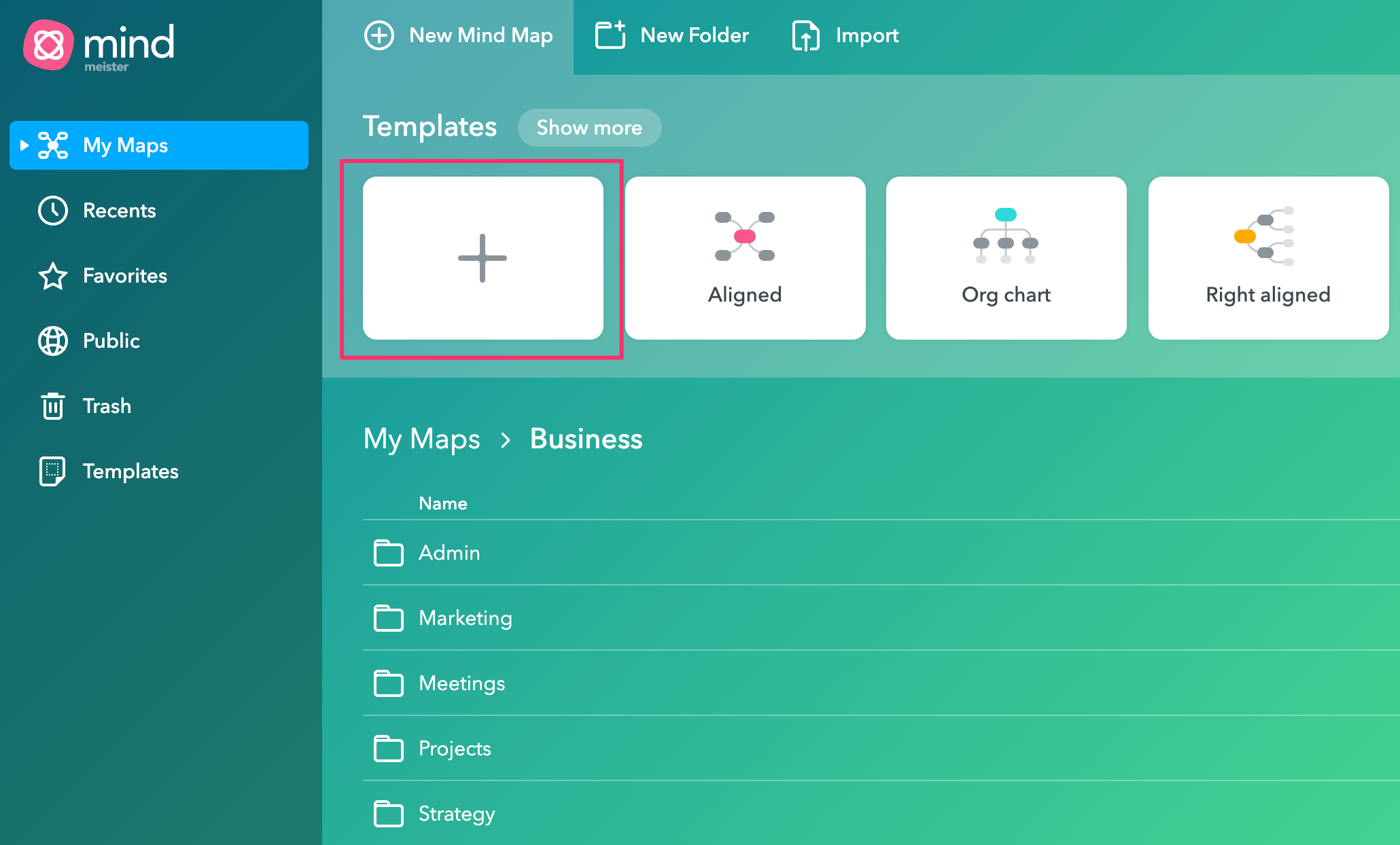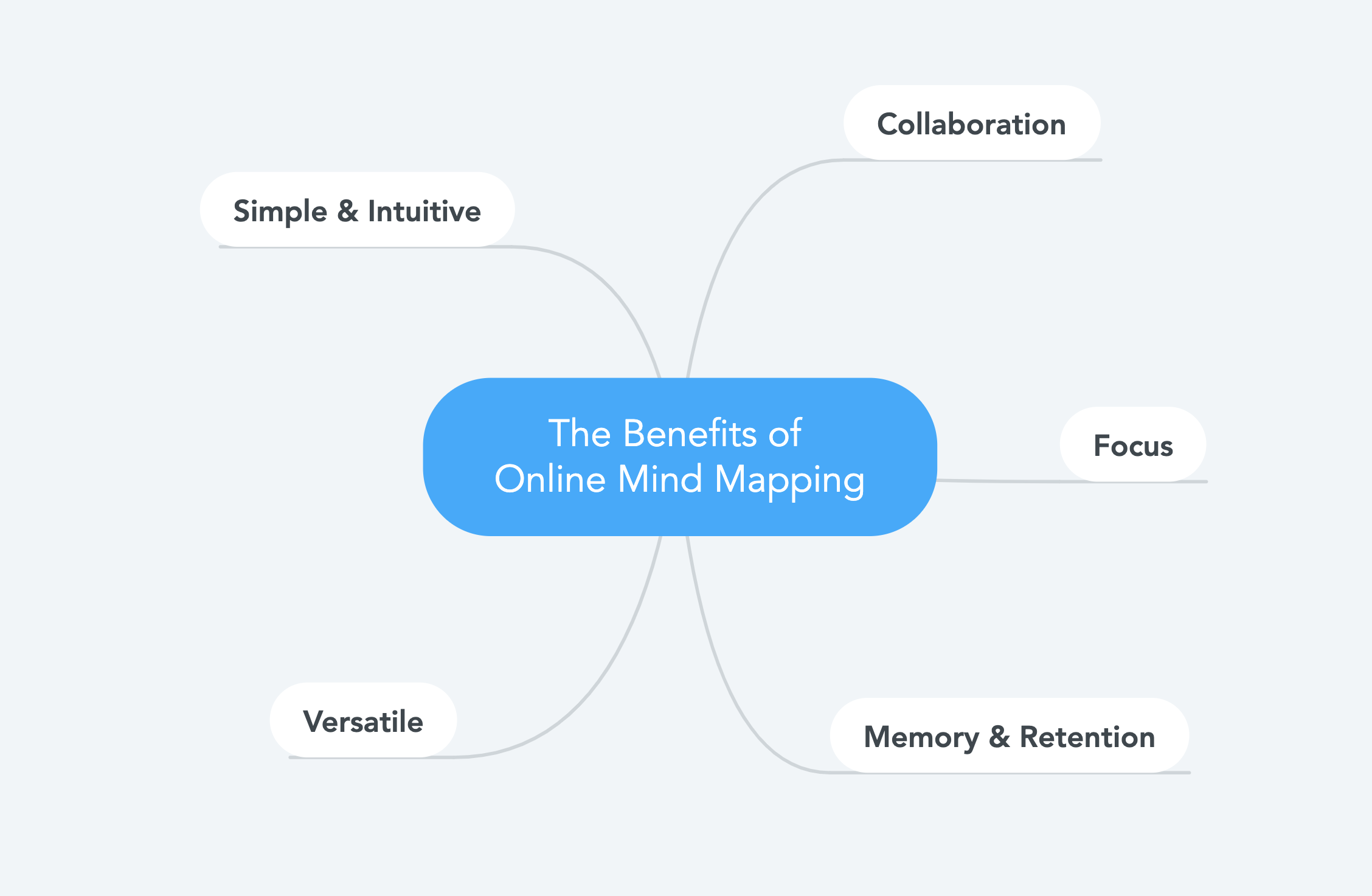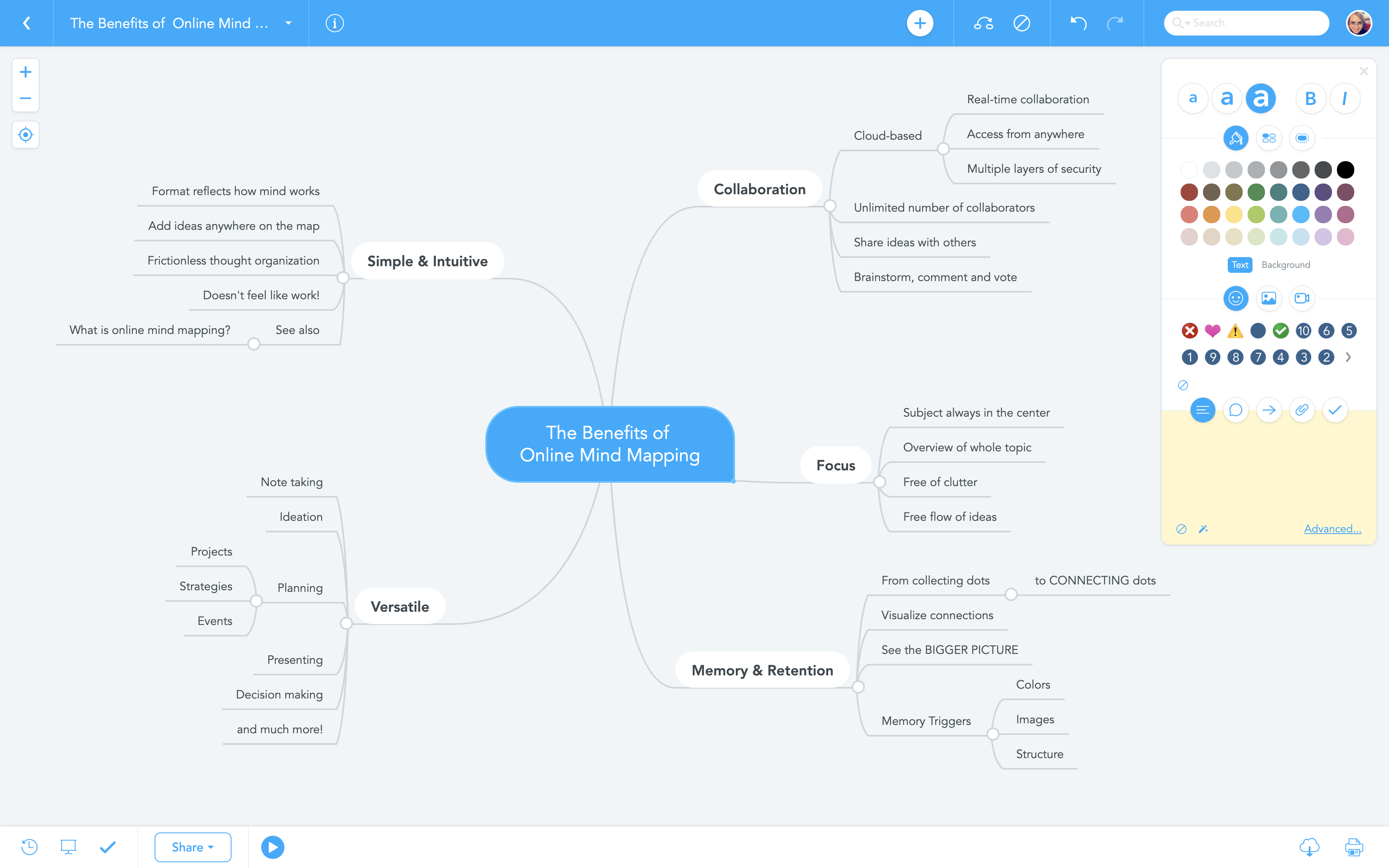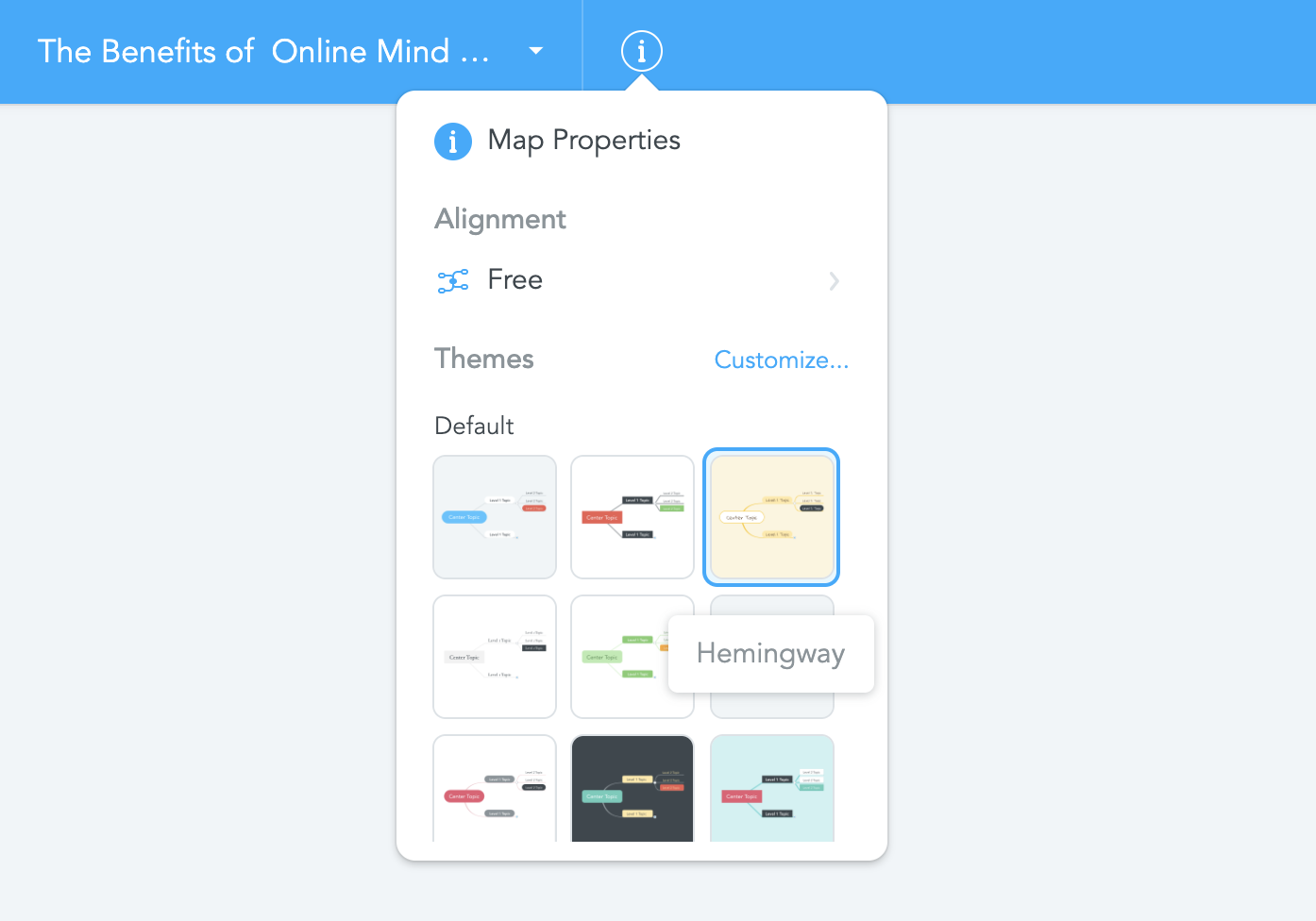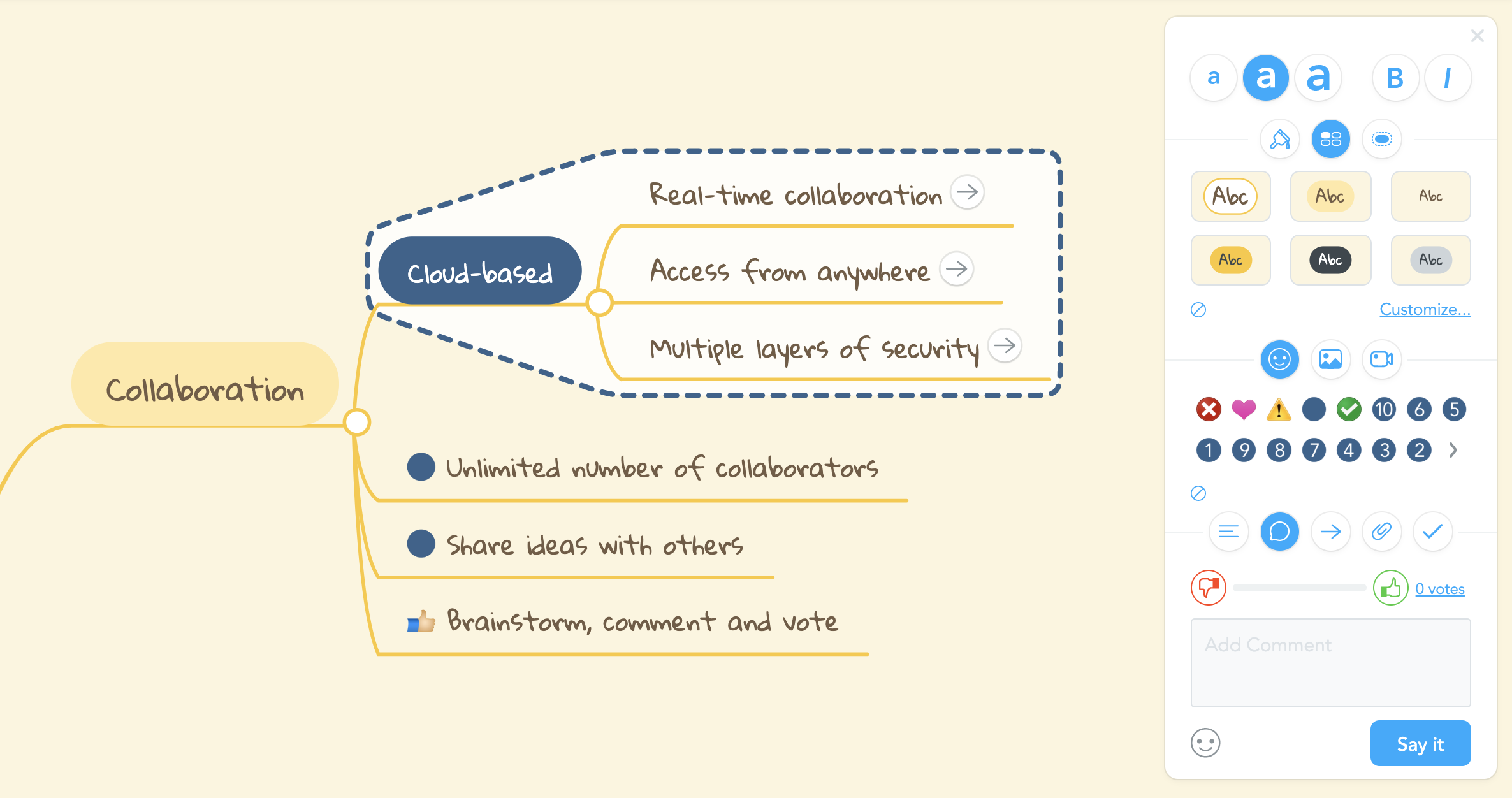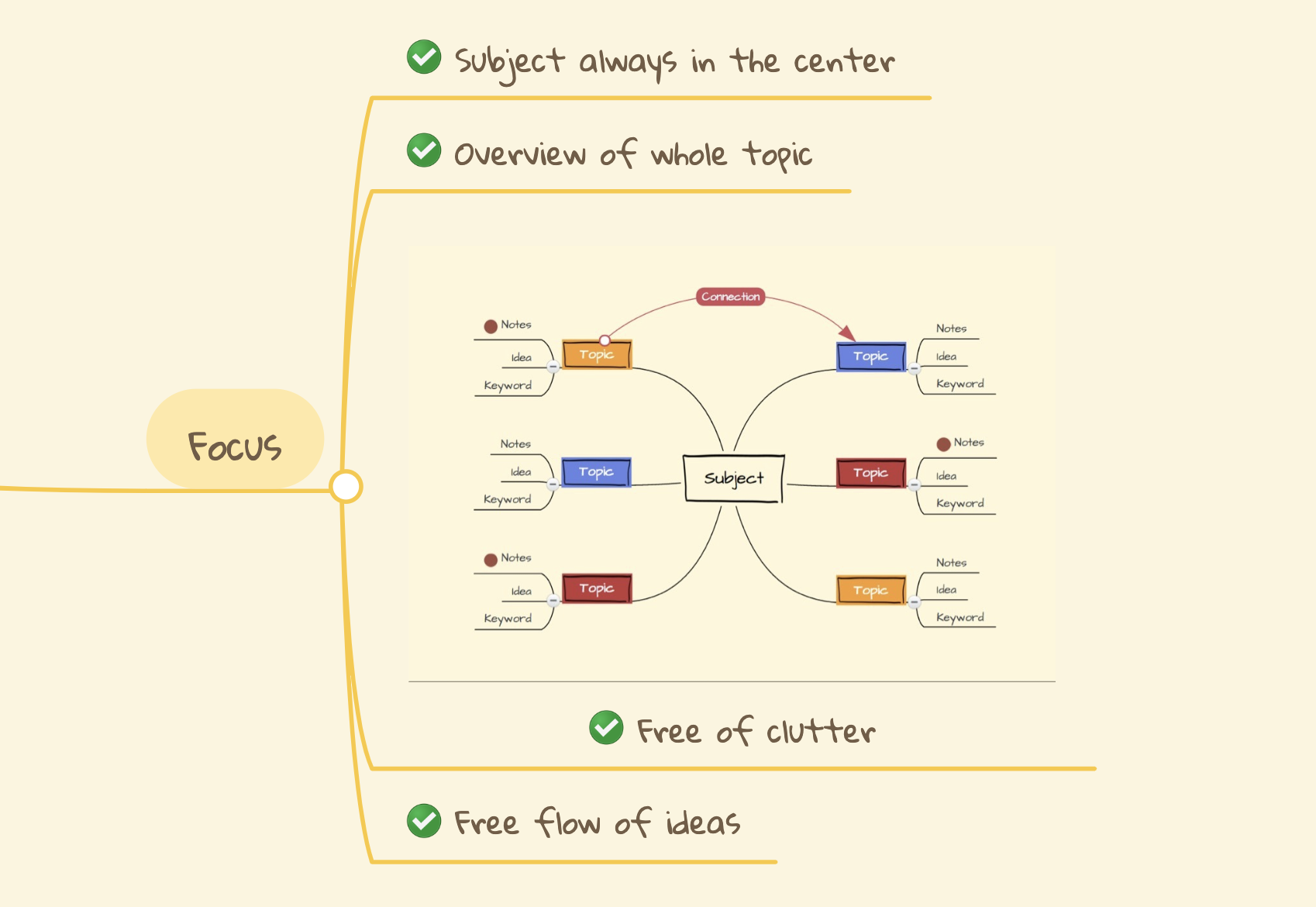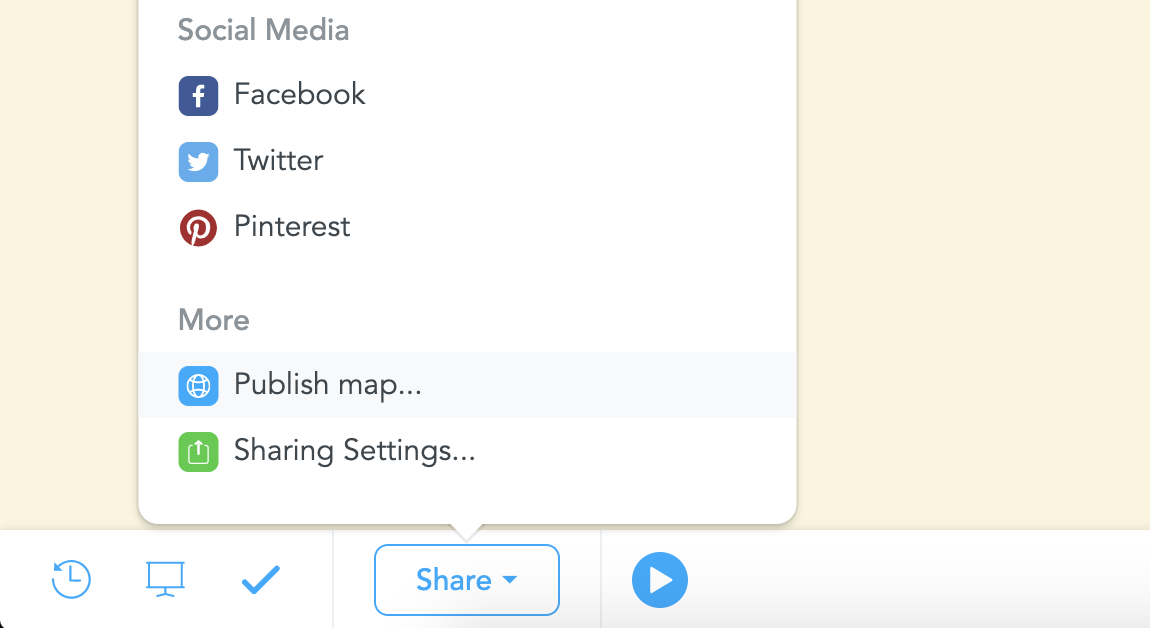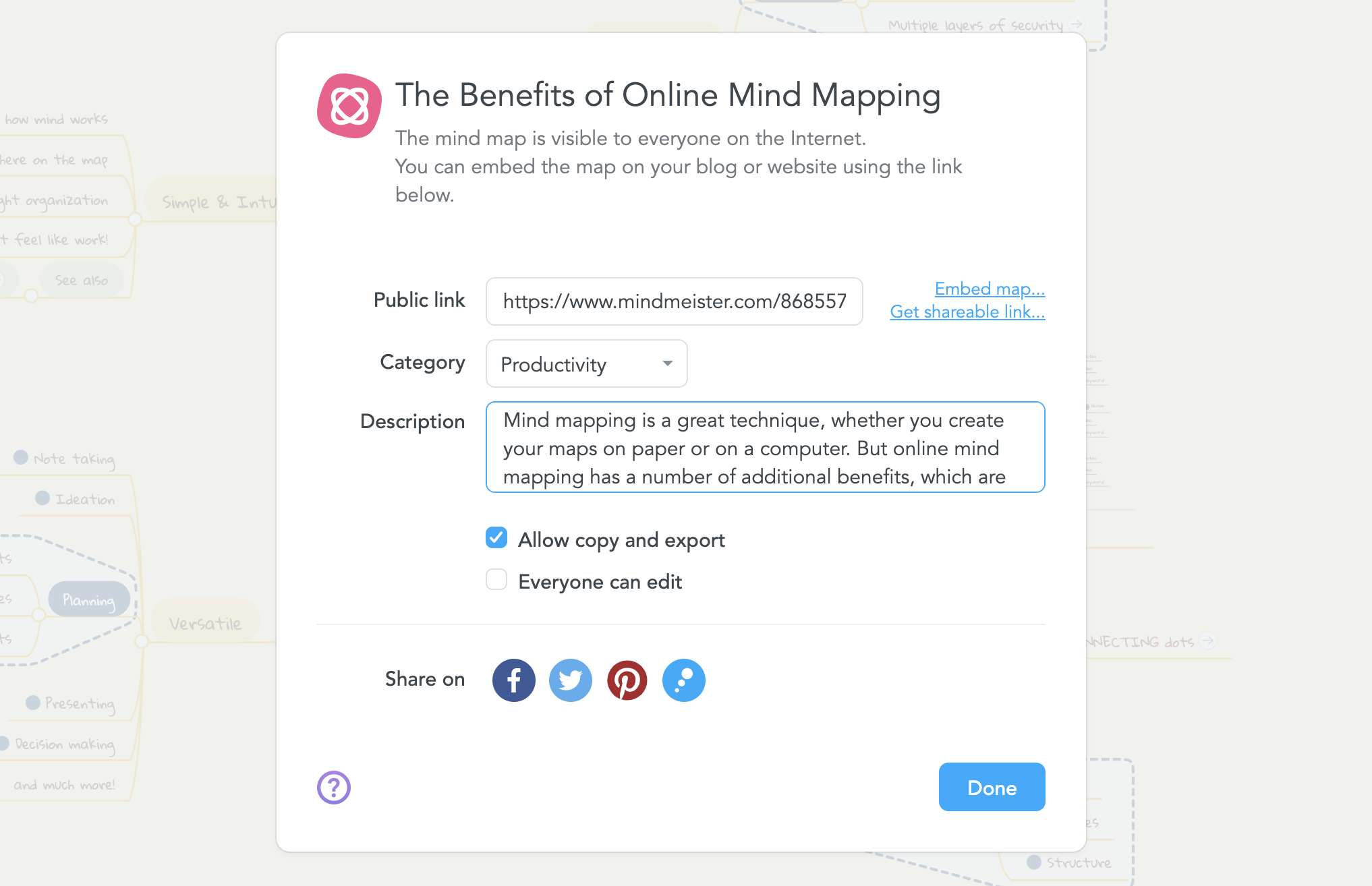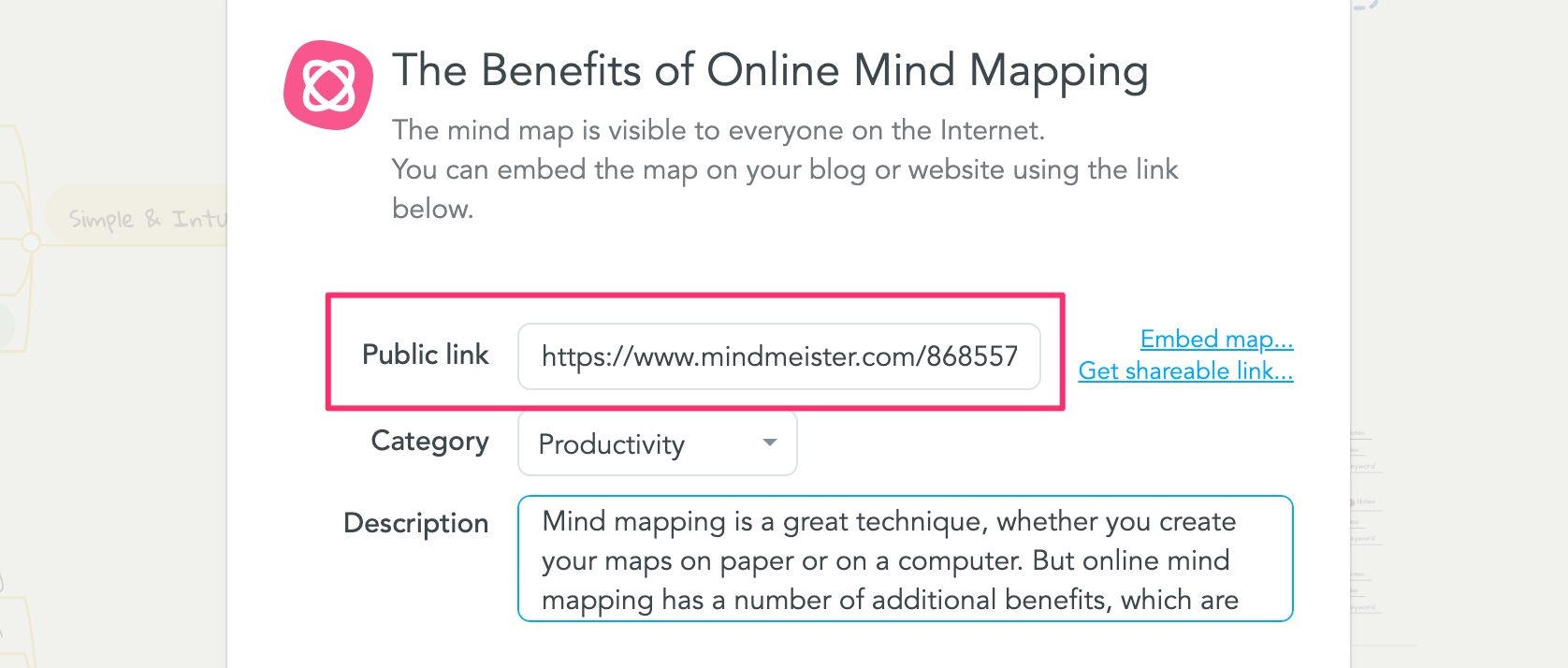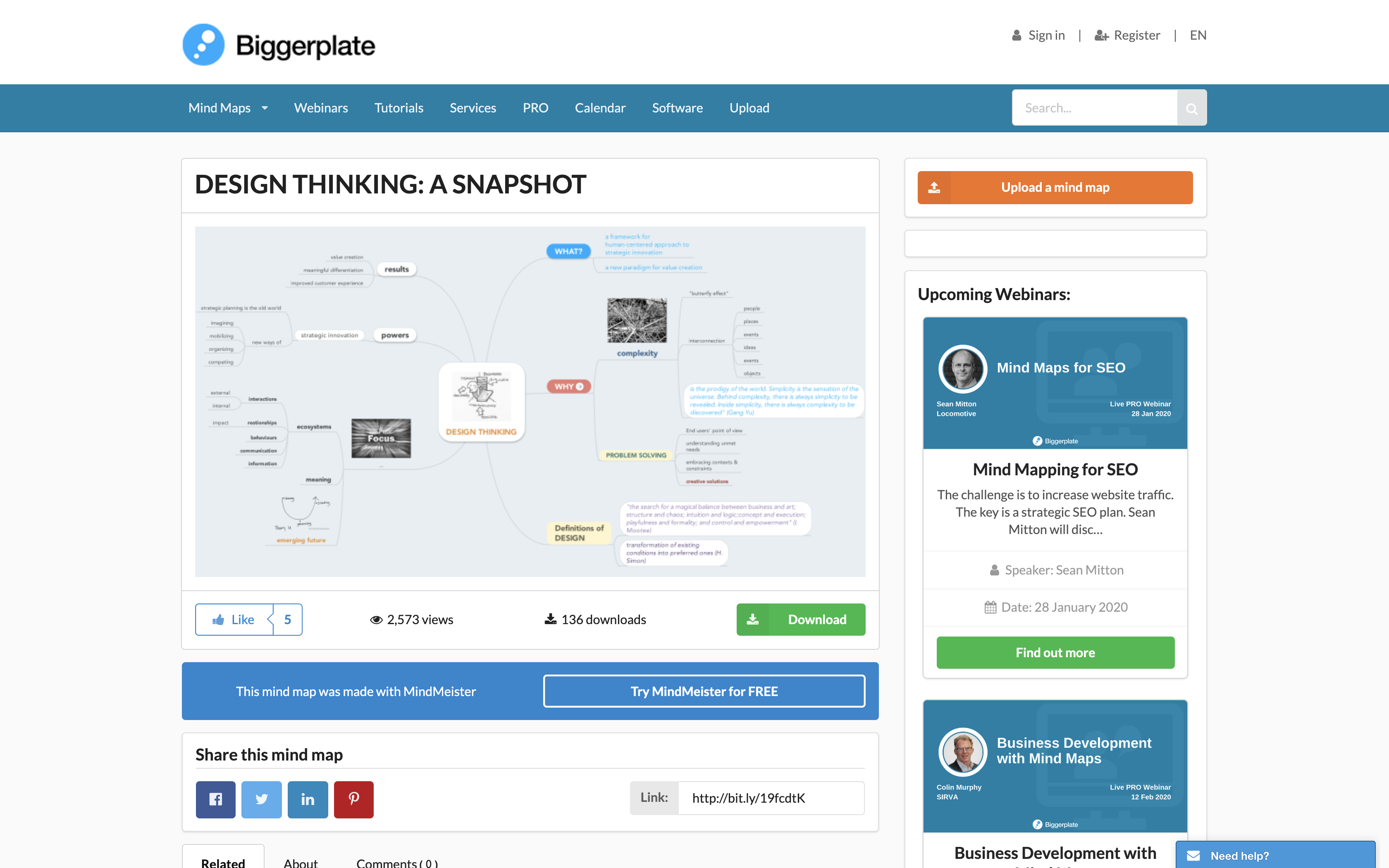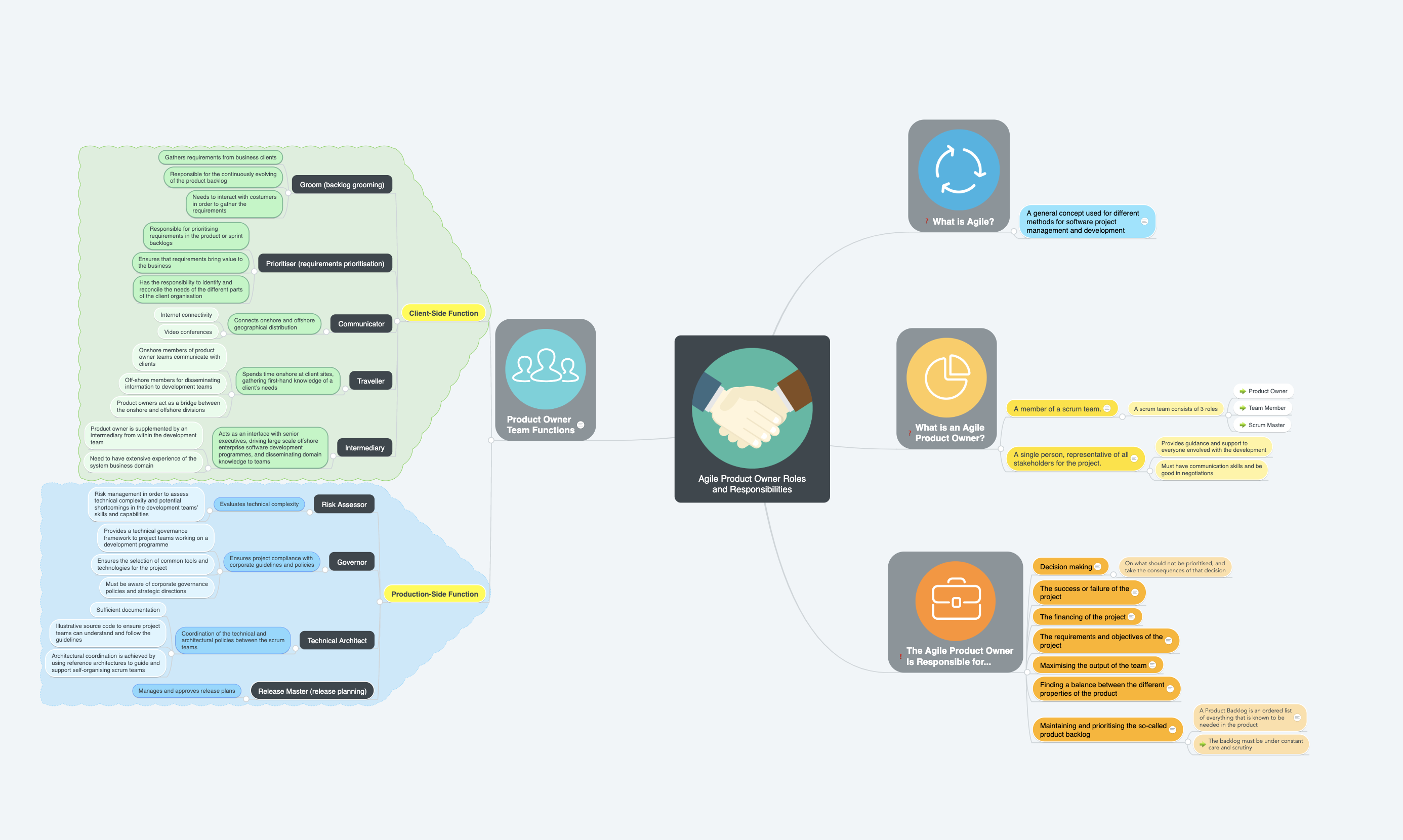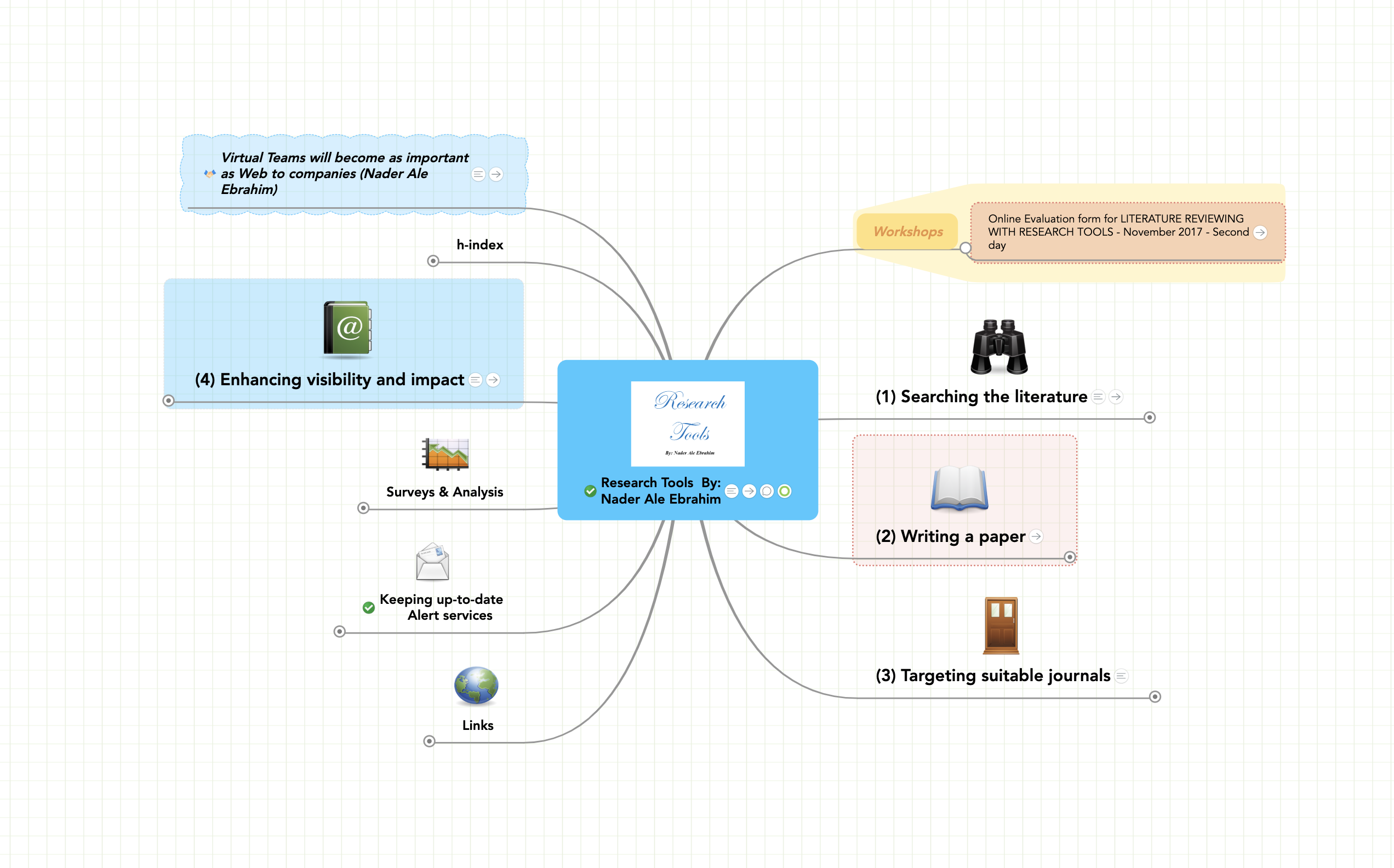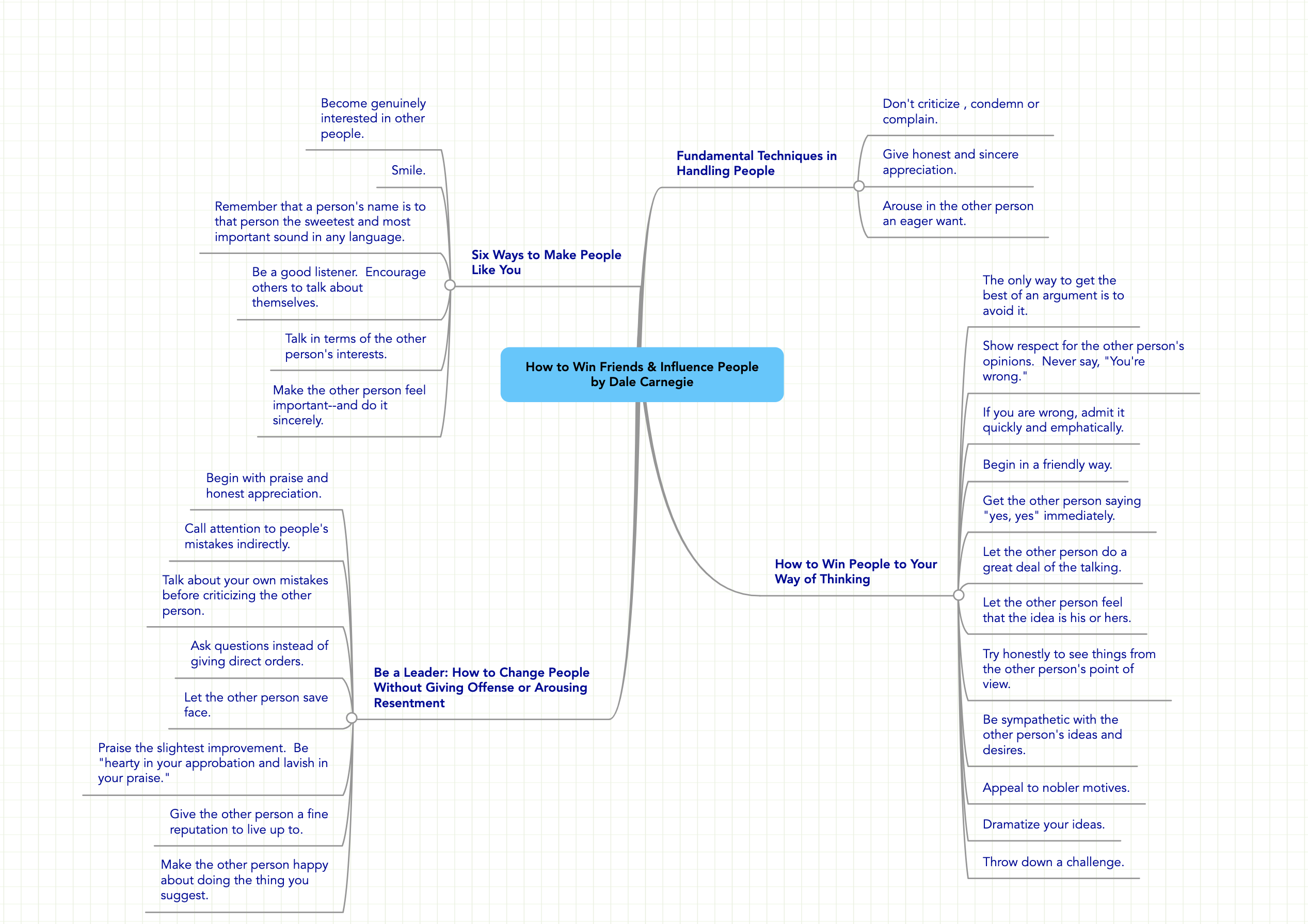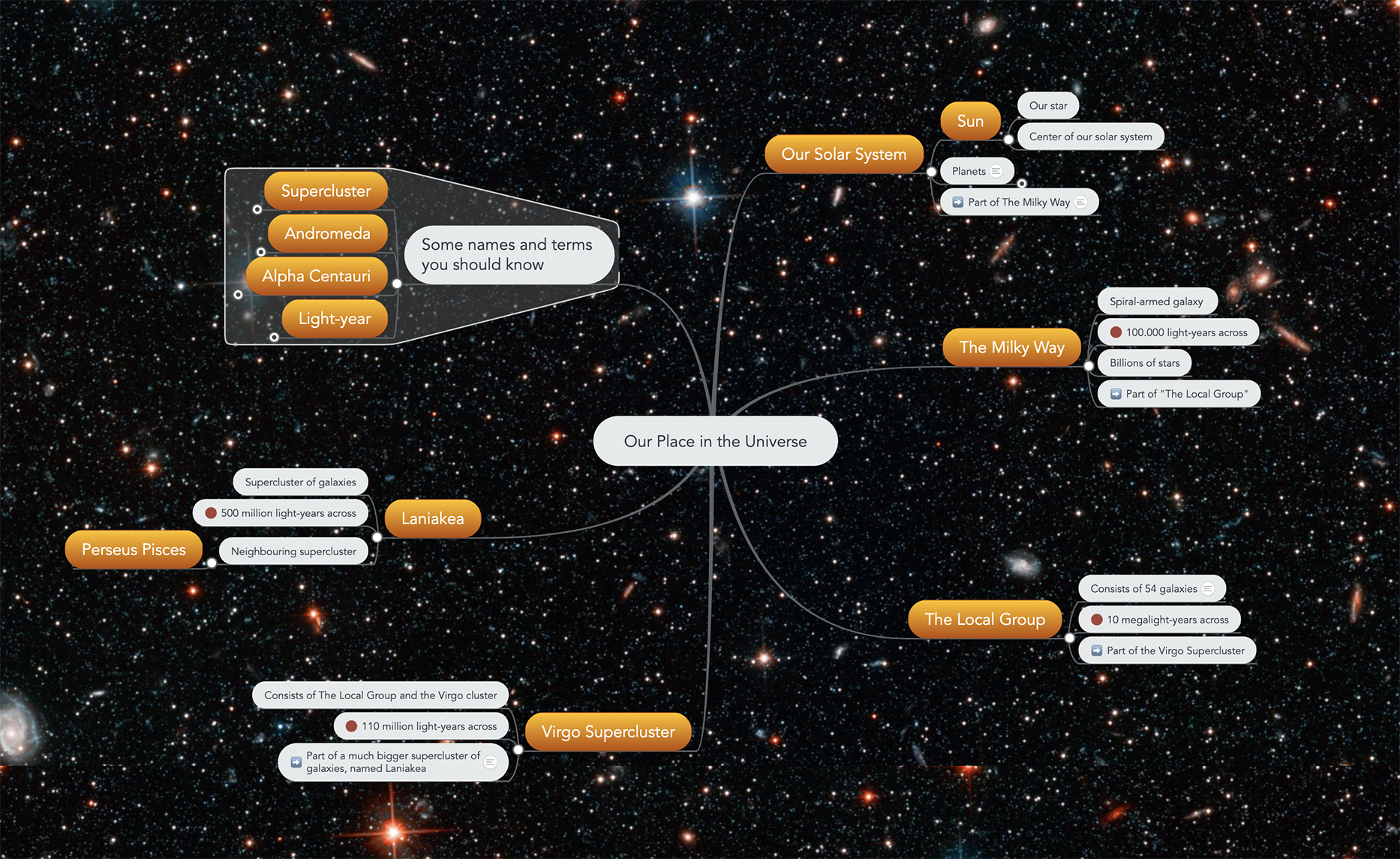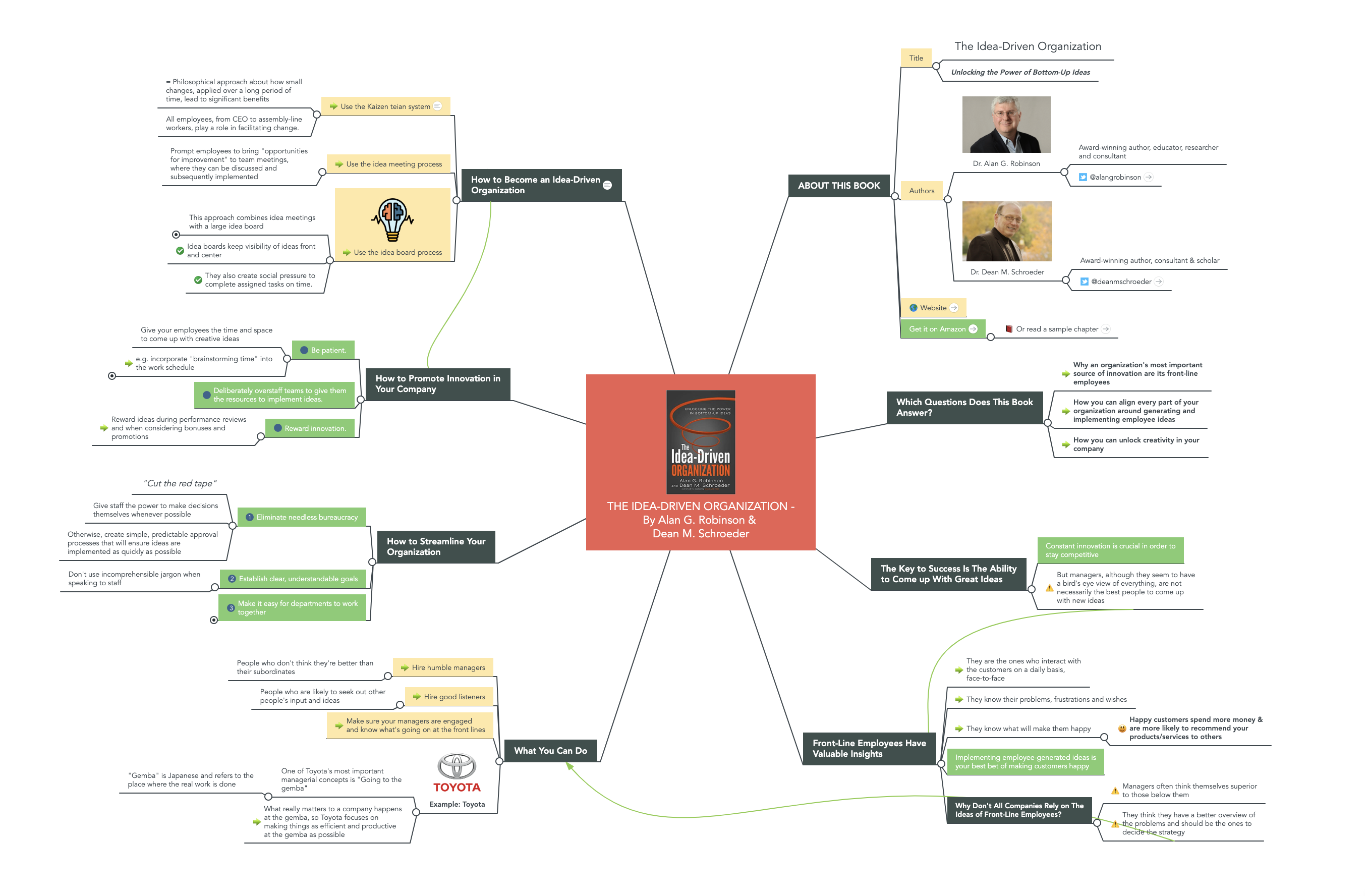This post was updated on December 6, 2021.
Please note: This article refers to a feature that is not yet available in MindMeister’s new map editor. Only users who have access to the old editor are able to publish mind maps and thus earn money with them.
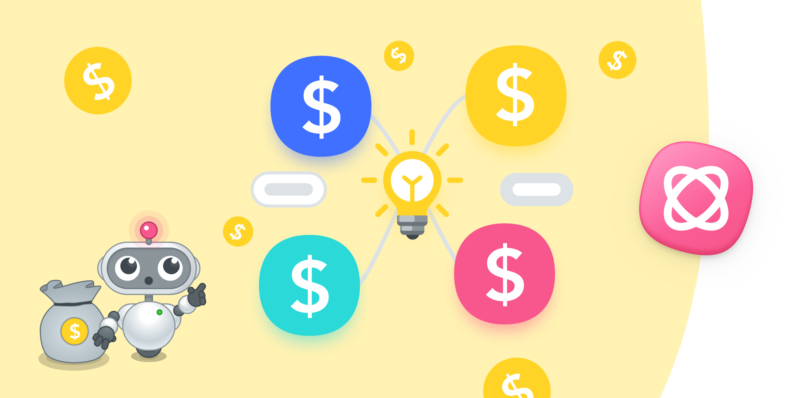
MindMeister’s new public map referral system allows any paying MindMeister user to earn cash with their public mind maps. Simply publish a great mind map with your MindMeister account and earn a recurring 20% commission on each map visitor who turns into a paying MindMeister customer!
The new public map referral system is part of MindMeister’s affiliate program, which has been around for many years. The affiliate program is a classic referral program and can be utilized by any MindMeister user:
- As a MindMeister Basic user, you can unlock additional mind map slots in your account by referring new users to MindMeister. You can unlock up to 10 additional maps for your free account this way.
- As a paying MindMeister user, you can earn a recurring 20% commission for each paying customer you refer to MindMeister. ‘Recurring’ means that you will receive a commission each time the customer makes a payment.
Traditionally, the only way to refer new users/customers to MindMeister was by using your personal affiliate link, which can be found in MindMeister’s Partner Portal (if you are a paying customer) i.e. the Invitations page (if you are a Basic user).
Thanks to the new public map referral system, however, there’s now a second way to unlock your free maps i.e. earn a commission: by publishing great mind maps!
In this article, we’ll guide you through the process and best practices of publishing great mind maps and earning a passive income with them.
Table of contents:
- How to earn money with public mind maps
- How to create a great public mind map
- How to make your mind map public
- How to get traffic to your public mind map
- Great public maps for your inspiration
1. How to earn money with public mind maps
There are only two things you need to earn a passive income through public mind maps:
1) A paid MindMeister account — whether it’s a Personal, Pro, Business, or Edu account doesn’t matter.
2) A PayPal account, since all commissions are paid via PayPal.
When you publish mind maps and share them on your website, your blog, or on social media, they can become popular, rank well in search engines, and get tens of thousands of views. If somebody views your mind map and subsequently signs up for a MindMeister account, you as the author of the public map will receive the referral benefits for this new signup.
Good to know:
- All people who visit your mind map and sign up for a MindMeister account within the same session will be counted towards your referrals.
- There is no limit to the number of users you can refer to MindMeister this way, and no limit to the commission you can earn.
- A 20% commission will be credited to your Affiliate account every time the referred user makes a payment.
- Visitors and sign-ups from your public mind maps are tracked alongside your regular referrals in your Affiliate Portal.
- As soon as you’ve reached $150 USD in commission, you can request a payout via PayPal. This can be done directly in the Affiliate Portal.
Important: To start earning money with your public mind maps, you need to first activate your Affiliate account in MindMeister by visiting the Partner Portal and joining the Affiliate Program.
Sample calculation:
To make things a little less theoretical, let’s look at a sample calculation of your commission:
Let’s say you make a great mind map, publish it, promote it, and within a few months, your map attracts 500 visitors. Out of those 500 visitors, let’s assume two people go on to create their own MindMeister accounts.
User #1 signs up for an annual subscription of our Personal account and thus pays $59.88 up front.
User #2 buys 5 annual Business licenses for their company and thus pays $749.40 up front.
Your commission of these two sales is 20%, which means you’ve just earned $161.86, and will receive the same amount again 12 months later, should the users choose to renew their subscriptions.
How many visitors your map attracts and how many of those turn into paying MindMeister users heavily depends on the quality of your map and how well you promote it. To increase your chances of success, we’ve put together a few tips below:
2. How to create a great public mind map
A public mind map is similar to a blog post, which means that almost all blogging best practices apply. In order to rank well in search engines and attract a lot of visitors, your map should be:
- Well researched — full of valuable, factual information, with references to sources.
- Well structured. We’ll explain the best structure of a map further below.
- Well written: Any text content should be free of mistakes and grammatically correct.
- Visually appealing: This is even more important for maps than for blog posts!
2.1 Research and planning
The simplest way to get started is to create a map about a topic you know well. If you’re a history buff, you might create a mind map about The Key Battles in the Napoleonic Wars; if you’re an author, you might put together a compilation of tips on How to write a great story, and so on.
However, if your aim is to get as many visitors as possible to your mind map, it pays off to do a little keyword research before you start creating your map, using a tool such as Moz Keyword Explorer. Keyword research will help you find out what questions your audience has that you can answer, and show you what content you need to cover in your map to satisfy your readers’ search intent.
If your goal is to make as much money with your map as possible, you should also consider what kind of people would be most likely to find MindMeister useful and make sure that your mind map speaks to them.
Tip: Text inside the notes widget does not get crawled, therefore you shouldn’t use this space for important keywords.
Please note that, just like with any other published work, it’s not okay to plagiarize content in a public mind map. If you’re quoting or otherwise using other people’s works, be sure to give them credit. A good way to do this is by adding quotation marks around the quoted text and providing a link to the source in the topic’s link widget. If you’re quoting from a book or another offline source, you can add the reference in the note widget.
2.2 Creating your mind map
Once you have a clear idea about the topic, scope, and content of your map, it’s time to get to work. Start by creating a new, blank mind map in MindMeister.
Write the title of your map into the root topic in the center of the canvas.
Then use the TAB key to create your first branch and write a keyword into the topic. If you compare the map with a blog post, you can think of the topics closest to the center as sub-headlines or H2s.
Add more branches until you’ve covered all the main ideas you want to include in your mind map. You can use the TAB and ENTER keys for this, which is quicker than using your mouse. TAB always creates a new sub-topic, meaning a topic on the next lower level. ENTER creates a new sibling-topic — a topic on the same hierarchical level as the last.
Now it’s time to dig deeper. Select one of the branches and add more sub-topics to it, again using the TAB and ENTER keys, then do the same with all other branches.
Tip: A mind map is not meant to consist of large chunks of texts. To ensure that your reader can grasp the key takeaways at a glance, stick to individual keywords, phrases, and short sentences whenever possible. If an idea requires more explanation, split it up into multiple sub-topics.
2.3 Making your map look beautiful
The big benefit of the mind map format is that it combines text with visuals — images, videos, gifs, icons and colors. Utilizing these multimedia options will enrich your maps and make them more memorable. Plus, the more beautiful your maps are, the more likely visitors will be to sign up for a MindMeister account after viewing them, so it’s worth putting some effort into the look of your maps!
Step 1: Choose a theme
Click on the ( i ) button in the top bar and select one of MindMeister’s default themes or click on Customize to create your own. If you’re creating a custom theme, you can choose from all kinds of fonts, colors, and line types, and even upload a background image if you want.
Step 2: Highlight important ideas
Use the sidebar on the right to change the look of individual topics and branches in your map. You can use boundaries to make an entire branch stand out, make topics bold or italic, and more.
Step 3: Add icons, images, gifs and videos
Using the sidebar, you can also enrich your topics with all kinds of visuals. You can upload your own images, browse YouTube to quickly embed a video, or select an icon from MindMeister’s large icon library.
Tip: You can adjust the size of embedded images. To do this, select the topic, then hover over the embedded image until you see the little gray corner appear on the bottom right. Click on the corner — while keeping the SHIFT key pressed — and drag it until your image has the right size.
Bonus: Turn your map into a slideshow
MindMeister’s built-in presentation mode lets you turn your map into a dynamic slideshow, which can also be viewed by visitors once the map is public. Click on the Play button in the embedded map below to see what it looks like when it’s done:
3. How to make your mind map public
Making your mind map public takes only a few seconds. In the map editor, click on Share in the footer and select Publish map… Confirm your decision in the next dialog.
Congratulations! Your map is now public, which means that it can be found and viewed (but not edited!) by anybody on the web. It also means that your map is now listed in MindMeister’s Public Maps Universe, which hundreds of people browse every day.
Before you leave, be sure to select the right category for your map and provide a good description for it. The former will make sure the map shows up in the right category in our Public Maps Universe. The description is a meta description, and Google may display it below the map’s title in the search results.
Tip: Read about best practices for your meta description here.
4. How to get traffic to your public mind map
When you make a mind map public, it gets indexed by search engines, meaning it can be found on Google. As mentioned above, one of the best ways to get your mind map in front of people’s eyes is by optimizing its content so it ranks highly in the search results. But once your mind map is published, there are still a number of things you can (and should!) do to get more traffic to the map. Here are a few tips:
Share your mind map on social media
One of the simplest and quickest ways to get more traffic to your public maps is to share them on your social media channels. You can use the share buttons in the publishing settings to share your map directly to Facebook, Twitter, or Pinterest.
AUTORES DE LA FILOSOFIA DEL URBANISMO Y LA CIUDAD https://t.co/VuWpR1YbLi vía @mindmeister
— Mar Aguirre (@maraaguirre98) November 25, 2019
Important: If you don’t want to use the share buttons, you can simply copy the map’s public link and paste it somewhere, for instance into a WhatsApp message. But be sure to use the correct link when sharing your map this way — the correct link is the public map link, which can be found in the publishing settings. Do not use the share link from the share dialog as this would potentially provide the visitor with editing rights to your mind map!
Share your map on Biggerplate
Biggerplate — the home of mind mapping — offers a huge public map library that attracts tons of people who are interested in mind maps. You can use your MindMeister credentials to sign up for a free Biggerplate account and then share all your public maps to Biggerplate to reach a wider audience. The guys at Biggerplate also regularly promote great mind maps on the platform’s social channels and in their newsletter, giving your map even more exposure.
Share your map in social groups, communities, and forums
If you’re a member of a social group, online community or forum, you could consider sharing your mind map there — provided the map offers valuable information the community actually cares about. For example, if you’ve summarized the key learnings of various productivity books in a mind map, the Reddit community in /r/BettermentBookClub/ might be interested in viewing it.
Embed your map in your blog or website
If you own a blog or website, you can easily embed your public maps there. To get the embed code, open the publishing settings and click on Embed map… You’ll be able to select the right dimensions before copying the code and pasting it into your HTML editor.
An embedded mind map is interactive, meaning that visitors will be able to zoom in and out, open and close branches, and click on embedded links. If you’ve turned your map into a presentation, they’ll also be able to view the slideshow inside the iframe.
Get others to share, embed, or link to your map
If you’ve created a truly great (read: both useful and beautiful) mind map, others may be interested in utilizing your map as a resource, too. For example, let’s say you’ve visualized the most important edtech trends in a mind map. An educational blogger focusing on technology trends may be interested in adding your mind map to one of their related articles, so you could offer them the link and/or embed code of your map in an email. Or, if you’ve created a map about the Top Ten Growth Hacks for 2020 and you’ve quoted a famous growth hacker’s advice in the map, you could reach out to them on Twitter to show them the map — if it really is a great resource, they may retweet it to their followers.
Include your map in your next email campaign
If you own a business or blog, you likely also send out newsletters to your subscribers. A great way to get traffic to your public mind map is by including a link to the map in your next email campaign. Consider adding a small preview image of the map in your email to entice more clicks — a picture speaks more than a thousand words.
Five great public mind maps for your inspiration
Last but not least, we’ve put together a list of great public mind maps for your inspiration. Each of these maps has more than 1,000 views, and some of them rank very highly in Google’s search results for their respective keywords.
Agile Product Owner Roles and Responsibilities — 60 K Views:
Research Tools By: Nader Ale Ebrahim — 408 K Views:
How to Win Friends & Influence People by Dale Carnegie — 2.3 M Views:
Our Place in the Universe — 7.8 K Views:
The Idea-Driven Organization — 3.9 K Views:

